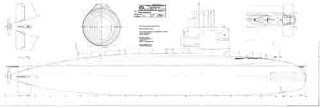China has admitted secretly salvaging a British submarine sunk in
an accident in 1931, but claimed there was no sign of the remains or
personal effects of the 18 men who were entombed in HMS Poseidon when
it went down off the former naval base of Weihai.
Beijing has only confirmed that it raised and scrapped the Poseidon in 1972
after its
fate was reported by The Daily Telegraph shortly after the
anniversary of the sinking on June 9.
But China's claim that the hull of the vessel contained no human remains,
identity tags, watches, rings or other personal items has provoked anger
among relatives of the men who died.
"It was a shock to discover the Chinese authorities' claims and I'm
deeply upset and disappointed," said Penny Lewis, whose grandfather,
Able Seaman Frederick Tolliday, died in the accident.
"And that is not only for myself, but especially on behalf of my father
and grandmother who were both still alive in 1972 when the Poseidon was
recovered," she said.
"The Royal Navy has always maintained that a large number of the crew
never escaped from the vessel, including my grandfather, but this conflicts
with the Chinese saying no remains or personal effects were discovered. Who
is telling the truth?" said Mrs Lewis, 51, from Stevenage, Herts.
In a statement, the Ministry of Defence said it "takes very seriously the
issue of the sovereignty of United Kingdom maritime graves."
Chinese authorities informed the ministry that "due to the long time that
has passed and the lack of effective record keeping during that turbulent
period of Chinese history, they have no more information that that which
appears on the Shanghai Salvage Bureau's web site."
It was this brief reference to the raising of the Poseidon during the Cultural
Revolution that caught the attention of American maritime historian Steven
Schwankert. Subsequent inquiries led to evidence that the Chinese salvaged
the vessel without informing London in order to test the skills of their
naval special forces and newly formed underwater recovery units, as well as
to clear a fishing area of a hazard that had been damaging fishermen's nets
for four decades.
And while it is accepted that little more can be done to protest the raising
of the vessel, there are hopes that China might be encouraged to conduct a
new investigation into the remains of the crew, which experts believe would
have been recovered.
After all, they point out, the CSS Hunley, one of the first submarines ever
built and sunk in 1864 during the American Civil War, contained eight
skeletons that had been almost perfectly preserved when it was recovered
from Charleston harbour in April 2004.
"There is no doubt in my mind that there would have been human remains on
board, and that means that either the people who raised the submarine lied
to the Chinese government, or they are lying to us," said David Clarke,
whose grandfather survived the sinking.
Petty Officer Reginald Clarke spent more than three hours inside the submarine
before managing to escape using the then-new Davis Submerged Escape
Apparatus, a rudimentary underwater breathing system designed to lift
sailors to the surface. Eight men managed to leave a bow section
compartment, although two failed to reach the surface and another died later.
"The answer the families have been given from the Chinese is completely
unsatisfactory and not at all believeable," Mr Clarke added.
The question of the fate of the crew of the Poseidon was raised in Parliament
in June by Dr Julian Lewis, the shadow defence minister, who believes that
an opportunity still remains for both the families and the Chinese naval
authorities to benefit from the situation.
"It is understandable that the Chinese authorities are sensitive about
any remains that may have been discovered, but I do hope that they will
check their records a little more thoroughly," he said.
"This is because they have a real opportunity to do something positive,
by reaching out from their modern navy to the descendants of sailors in our
inter-war navy, to strengthen bonds and perhaps even invite the relatives to
an appropriate ceremony in Weihai to rebury any remains they have found,"
he added (telegraph).
























































































